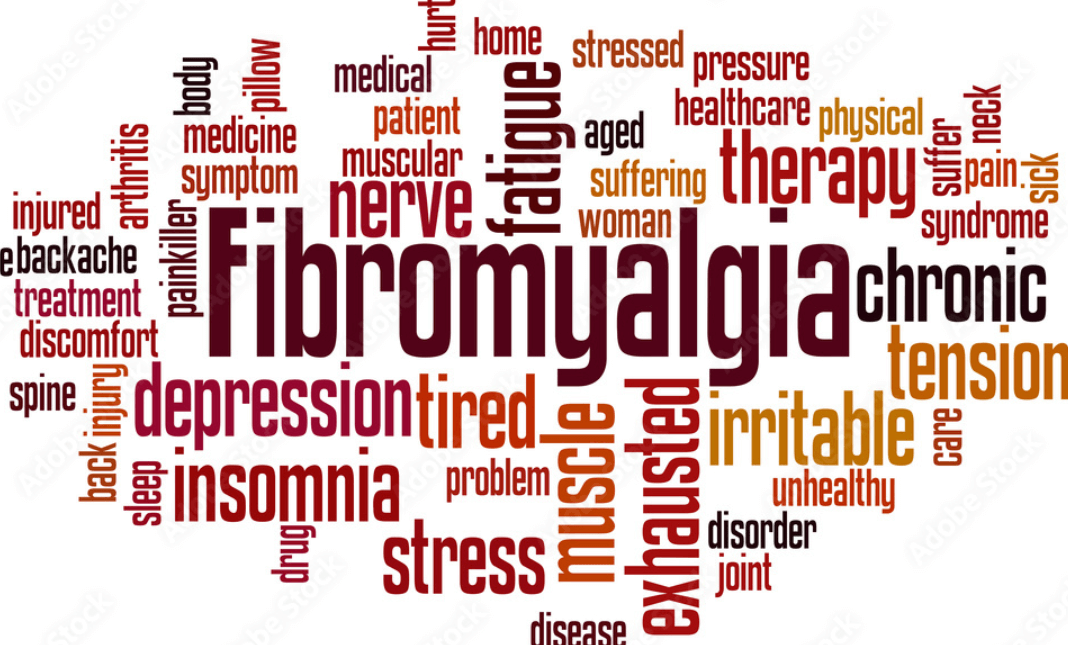Unravelling the Mystery of Fibromyalgia: Your questions answered
Further Reading:
Unravelling the Mystery of Fibromyalgia: Understanding the Condition
Understanding Sleep Disturbances in Fibromyalgia
Fibromyalgia is a chronic pain condition that affects millions of people worldwide. Yet, despite its prevalence, there is still much confusion and misinformation surrounding this condition. In this comprehensive guide, we will answer seven frequently asked questions about fibromyalgia, shedding light on this often-misunderstood condition.
1. What Is Fibromyalgia?
Fibromyalgia is a complex and chronic pain disorder characterized by widespread musculoskeletal pain, tenderness, and fatigue. It is a neurological condition that primarily affects women, although men and children can also develop it. While the exact cause of fibromyalgia remains unknown, it is believed to involve a combination of genetic, environmental, and psychological factors.
The hallmark of fibromyalgia is widespread pain, typically affecting both sides of the body, above and below the waist, and along the spine. This pain is often described as a deep, persistent ache and can be accompanied by tender points on the body, which are specific areas that are particularly sensitive to pressure.
2. What Are the Common Symptoms of Fibromyalgia?
Fibromyalgia is more than just pain; it is a complex condition with a wide range of symptoms. Some of the most common symptoms include:
a). Widespread pain: As mentioned earlier, fibromyalgia is characterized by chronic pain that affects various parts of the body.
b). Fatigue: Many individuals with fibromyalgia experience overwhelming fatigue, even after a full night's sleep.
c). Sleep disturbances: Sleep problems are a hallmark of fibromyalgia. People with this condition often have difficulty falling asleep or staying asleep, leading to unrefreshing sleep.
d). Cognitive issues: Often referred to as "fibro fog," cognitive problems such as memory issues, difficulty concentrating, and confusion can be prevalent.
e). Mood disorders: Depression and anxiety frequently coexist with fibromyalgia, and the chronic pain and fatigue can exacerbate these conditions.
f). Headaches: Frequent headaches, including tension-type headaches and migraines, are common in individuals with fibromyalgia.
g). Irritable bowel syndrome (IBS): Many people with fibromyalgia also experience gastrointestinal symptoms, such as abdominal pain, diarrhoea, or constipation.
h). Sensitivity to stimuli: Heightened sensitivity to lights, sounds, and temperature changes is often reported by those with fibromyalgia.
3. How Is Fibromyalgia Diagnosed?
Diagnosing fibromyalgia can be challenging because there are no specific laboratory tests or imaging studies that can definitively confirm the condition. Instead, diagnosis relies on a combination of clinical evaluation and the presence of certain criteria.
The most widely accepted diagnostic criteria for fibromyalgia are those established by the American College of Rheumatology (ACR). According to the ACR criteria, a person must meet the following conditions for a diagnosis of fibromyalgia:
1. Widespread pain lasting for at least three months.
2. Tenderness in at least 11 out of 18 designated tender points when pressure is applied.
It's essential to consult a healthcare professional experienced in diagnosing fibromyalgia, as they can rule out other conditions with similar symptoms and ensure an accurate diagnosis.
4. What Causes Fibromyalgia?
The precise cause of fibromyalgia remains unknown, but research suggests that it may result from a combination of factors, including:
a). Genetics: There appears to be a genetic component to fibromyalgia, as it often runs in families.
b). Abnormal pain processing: People with fibromyalgia may have altered pain processing in the central nervous system, leading to an increased perception of pain.
c). Infections: Some viral or bacterial infections have been linked to the onset of fibromyalgia in some cases.
d). Trauma or injury: Physical trauma, such as car accidents, surgery, or repetitive injuries, may trigger fibromyalgia symptoms in susceptible individuals.
e). Psychological factors: Stress, anxiety, and emotional trauma can exacerbate fibromyalgia symptoms.
f). Hormonal changes: Hormonal fluctuations, such as those that occur during menopause, can influence the severity of fibromyalgia symptoms.
g). Sleep disturbances: Poor sleep quality or sleep disorders can contribute to fibromyalgia symptoms.
5. Can Fibromyalgia Be Treated?
While there is no cure for fibromyalgia, various treatment options can help manage the condition and improve the quality of life for those affected. Treatment typically involves a multidisciplinary approach that may include the following components:
1. Medications: Your healthcare provider may prescribe medications to help alleviate pain, improve sleep, and manage other symptoms. Commonly prescribed medications include analgesics, antidepressants, and anticonvulsants.
2. Physical therapy: Physical therapy can be beneficial for improving flexibility, strength, and range of motion while reducing pain.
3. Exercise: Engaging in regular, low-impact exercises such as walking, swimming, or gentle yoga can help improve symptoms and overall well-being.
4. Cognitive-behavioural therapy (CBT): CBT can help individuals with fibromyalgia manage pain, cope with stress, and address mood disorders like depression and anxiety.
5. Sleep management: Implementing good sleep hygiene practices and addressing sleep disorders can improve sleep quality for people with fibromyalgia.
6. Lifestyle modifications: Making dietary changes, managing stress, and pacing activities can all play a significant role in symptom management.
7. Alternative therapies: Some individuals find relief from complementary and alternative therapies like acupuncture, massage therapy, or chiropractic care.
Treatment plans should be tailored to each individual's specific needs and may involve a combination of these approaches. It's essential to work closely with a healthcare provider to develop a personalized treatment strategy.
6. Is Fibromyalgia a Real Condition?
Fibromyalgia is indeed a real and recognized medical condition. However, its nature as an invisible illness, characterized by symptoms that are not easily observable or quantifiable, has led to scepticism and misunderstandings among some individuals, including healthcare professionals.
In recent years, extensive research has provided substantial evidence supporting the existence of fibromyalgia as a neurological condition characterized by abnormal pain processing, changes in brain connectivity, and other physiological alterations. The American College of Rheumatology, the American Medical Association, and the World Health Organization all acknowledge fibromyalgia as a legitimate medical condition.
People with fibromyalgia often face challenges in obtaining a proper diagnosis and understanding from friends, family, and even healthcare providers. The validation of their experiences and symptoms is crucial for their overall well-being and access to appropriate care.
7. What Can I Do to Support Someone with Fibromyalgia?
Supporting a loved one with fibromyalgia can be challenging, but it is essential to provide understanding and empathy. Here are some tips for supporting someone with fibromyalgia:
a). Educate yourself: Learn about fibromyalgia to better understand what your loved one is going through and the challenges they face.
b). Listen and validate: Be a compassionate listener and acknowledge their pain and fatigue. Avoid dismissing their symptoms or suggesting that it's "all in their head."
c). Offer practical help: Assist with daily tasks or chores when needed, especially during flare-ups when symptoms are more severe.
d). Be patient: Understand that their energy levels may fluctuate, and they may need to cancel plans or take breaks during activities. Patience and flexibility are key.
e). Encourage self-care: Support their efforts to manage their condition through healthy lifestyle choices, such as regular exercise, a balanced diet, and stress reduction techniques.
f). Accompany them to appointments: If they're comfortable with it, offer to accompany them to medical appointments. This can provide emotional support and help them remember important information.
g). Be mindful of their triggers: Help create an environment that minimizes potential triggers, such as loud noises, bright lights, or stressful situations.
h). Offer emotional support: Understand that living with fibromyalgia can be emotionally challenging. Offer a sympathetic ear and emotional support when they need it.
i). Respect their boundaries: It's important to respect their need for alone time or rest when they're not feeling well. Don't push them to do more than they can handle.
j). Advocate for their needs: Encourage them to advocate for themselves within the healthcare system and be willing to help if necessary. This may include seeking a second opinion or asking for accommodations at work or in social settings.
k). Be patient with treatment: Keep in mind that finding an effective treatment plan can take time. Encourage them to work closely with their healthcare provider to explore different options.
l). Seek support for yourself: Caring for someone with a chronic condition can be emotionally challenging. Consider seeking support or counselling to help you cope with your own feelings and stress.
Raising Awareness and Supporting the Cause
Together, we can continue to raise awareness and improve the lives of those affected by this chronic pain condition. Advocacy and community involvement play a significant role in achieving these goals. Here are some ways you can get involved:
- Support Fibromyalgia Research: Research is vital to understanding fibromyalgia better and developing more effective treatments. Consider donating to or participating in clinical trials and studies focused on fibromyalgia. These efforts are essential for advancing our knowledge of the condition.
- Join a Support Group: Both patients and caregivers can benefit from joining a fibromyalgia support group. These groups provide a safe space to share experiences, exchange coping strategies, and offer emotional support. You can find in-person and online support groups tailored to fibromyalgia.
- Participate in Awareness Campaigns: Raise awareness about fibromyalgia by participating in local or national awareness campaigns. You can share informative posts on social media, organize community events, or collaborate with existing advocacy organizations.
- Educate Others: Encourage friends, family, and coworkers to learn more about fibromyalgia. Sharing educational materials and personal stories can help dispel myths and misconceptions surrounding the condition.
- Advocate for Policy Changes: Advocate for policies that support individuals with fibromyalgia. This may include pushing for better access to healthcare, disability accommodations, and improved research funding.
- Promote Self-Care: Encourage self-care practices among those with fibromyalgia. This can involve helping them establish and maintain healthy routines, manage stress, and prioritize sleep.
- Be an Ally: Be a reliable ally for those living with fibromyalgia. Your understanding, patience, and willingness to accommodate their needs can make a significant difference in their daily lives.
- Raise Your Voice: Share your knowledge and experiences with fibromyalgia. Writing blogs, articles, or personal stories can help bring attention to the condition and provide a platform for others to share their journeys.
- Connect with Advocacy Groups: Numerous organizations are dedicated to fibromyalgia awareness, research, and support. Connect with these groups to stay informed, access resources, and collaborate on initiatives to improve the lives of those with fibromyalgia.
In conclusion, fibromyalgia is a real and challenging condition that affects millions worldwide. While it presents unique challenges, with the right support, understanding, and advocacy, individuals with fibromyalgia can lead fulfilling lives. Whether you're a patient, a caregiver, or simply someone interested in making a positive impact, your involvement can contribute to a brighter future for those affected by fibromyalgia. Together, we can raise awareness, advance research, and foster a more compassionate and inclusive society for all.
By dispelling misconceptions and offering support and empathy, we can create a more inclusive and compassionate environment for those living with fibromyalgia. Remember that each person's experience with fibromyalgia is unique, so tailoring your support to their individual needs and preferences is key to helping them live a fulfilling life despite the challenges they face. Together, we can continue to raise awareness and improve the lives of those affected by this chronic pain condition.
Blog Post by Sanggol Blogs | Sanggolcomfort.com. Sanggol are manufacturers and retailers of Sanggol U Body Pillows | U Pregnancy Pillows, J Pregnancy Body Pillows and C shaped Body Pillow | Nursing Pillow.












